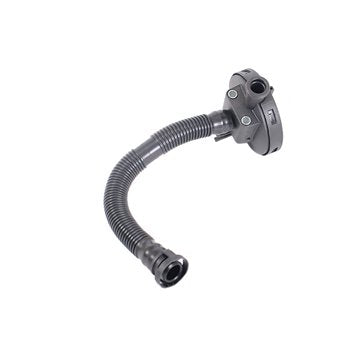Just How a Clp Engine Can Enhance Efficiency in Numerous Industries
The introduction of CLP engines notes a considerable change in functional performance across numerous sectors, driven by their capacity to maximize gas consumption and lessen downtime. Industries such as manufacturing and logistics stand to get considerably from their robust layout and constant power output, which promise to streamline procedures and enhance efficiency. As companies increasingly prioritize sustainability along with efficiency, the function of CLP engines becomes a lot more vital. What continues to be to be seen is how these developments will certainly form the future landscape of industrial operations and their effect on more comprehensive financial trends (clp engine).
Summary of CLP Engines
CLP engines, or Continual Fluid Propellant engines, represent a significant advancement in propulsion technology, specifically for area applications. These engines use a continuous feed system that enables for the sustained expulsion of propellant, causing improved efficiency and efficiency contrasted to traditional solid or hybrid propulsion systems. By keeping a constant circulation of liquid propellant, CLP engines can achieve more accurate thrust control, which is essential for steering spacecraft in different objective situations.
The style of CLP engines integrates innovative materials and cutting-edge gas management systems. clp engine. This leads to reduced weight and raised dependability, essential aspects for long-duration area goals. In addition, the constant operation lessens the risk of burning instability, a common difficulty in standard rocket engines.

Advantages in Production
The manufacturing of Constant Liquid Propellant (CLP) engines presents several notable advantages that enhance both performance and cost-effectiveness. Among the key advantages is the structured manufacturing process, which decreases the complexity connected with traditional propulsion systems. By making use of fluid propellant, makers can accomplish higher precision in engine performance, bring about maximized power outcome and decreased waste.
Additionally, CLP engines facilitate a greater level of modularity, permitting simpler integration right into various production lines. This versatility can dramatically reduce lead times and boost general operational adaptability. The usage of CLP modern technology also often tends to lessen the requirement for substantial maintenance because of fewer relocating components, which converts right into decreased downtime and operational expenses.

Applications in Logistics
Leveraging Continuous Liquid Propellant (CLP) engines in logistics provides considerable benefits in operational find more info performance and integrity. These engines give a durable remedy for numerous transport demands, making it possible for the smooth motion of products across large distances. The inherent design of CLP engines enables regular power result, which equates into smoother and much more predictable transport timetables.
Among the crucial applications of CLP engines in logistics is in heavy-duty products transportation, where they can drive both ground and airborne automobiles. Their capability to maintain high efficiency under differing tons conditions guarantees that delivery timelines are fulfilled, consequently improving customer fulfillment. Furthermore, CLP engines can be integrated right into automated logistics systems, promoting real-time tracking and optimizing course preparation.
Furthermore, the toughness of CLP engines minimizes maintenance downtime, allowing logistics business to optimize their functional capabilities. This is specifically helpful in warehousing operations, where performance in managing and transferring items is vital. As logistics remains to progress, the integration of CLP engines stands for a forward-thinking method that not only enhances performance however also sustains the industry's expanding demands for integrity and rate.
Effect on Power Effectiveness
Just How do Constant Liquid Propellant (CLP) engines enhance power efficiency in transport? CLP engines utilize a regular flow of fluid fuel, maximizing combustion processes and keeping a stable drive output. This layout reduces energy losses associated with standard burning engines, where gas delivery can vary and result in ineffectiveness.
The continual operation of CLP engines enables for a much more reliable thermal cycle, leading to greater specific impulse compared to standard engines. clp engine. This translates to decreased fuel usage for the very same quantity of job done, considerably reducing functional expenses throughout numerous transport fields, consisting of aviation and maritime industries
Furthermore, the capability of CLP engines to preserve ideal efficiency under differing tons problems minimizes the demand for constant velocity and slowdown, further enhancing gas performance. Boosted power efficiency not only contributes to cost savings but also results in lower greenhouse gas exhausts, lining up with global sustainability objectives.
Future Trends and Innovations
Arising developments in Continual Fluid Propellant (CLP) Look At This engine modern technology assurance to change the landscape of transport effectiveness and sustainability. As industries pivot toward greener choices, CLP engines stand at the center, incorporating ingenious materials and design techniques that boost performance while reducing environmental influence.
Among one of the most appealing trends is the fostering of crossbreed systems that integrate CLP engines with sustainable energy resources. This harmony can optimize fuel intake and minimize discharges, aligning with global sustainability objectives. In addition, innovations in computational liquid characteristics (CFD) are helping with the design of more aerodynamically efficient engines, leading to reduced drag and boosted gas effectiveness.
Additionally, the advancement of wise tracking systems is readied to boost functional effectiveness. These systems leverage data analytics and IoT modern technology to enhance engine efficiency in real-time, guaranteeing that the engines run within their most efficient criteria.
As research study remains to explore different propellant formulations-- such as biofuels and artificial gas-- the future of CLP engines looks promising. By utilizing these technologies, industries can not only enhance their performance but likewise add significantly to a cleaner, much more lasting future in transport.
Conclusion
In final thought, CLP engines represent a substantial innovation in efficiency across multiple industries. The assimilation of innovative products and fewer moving parts decreases maintenance this post needs, while placement with sustainability objectives placements CLP engines as a pivotal technology for the future.